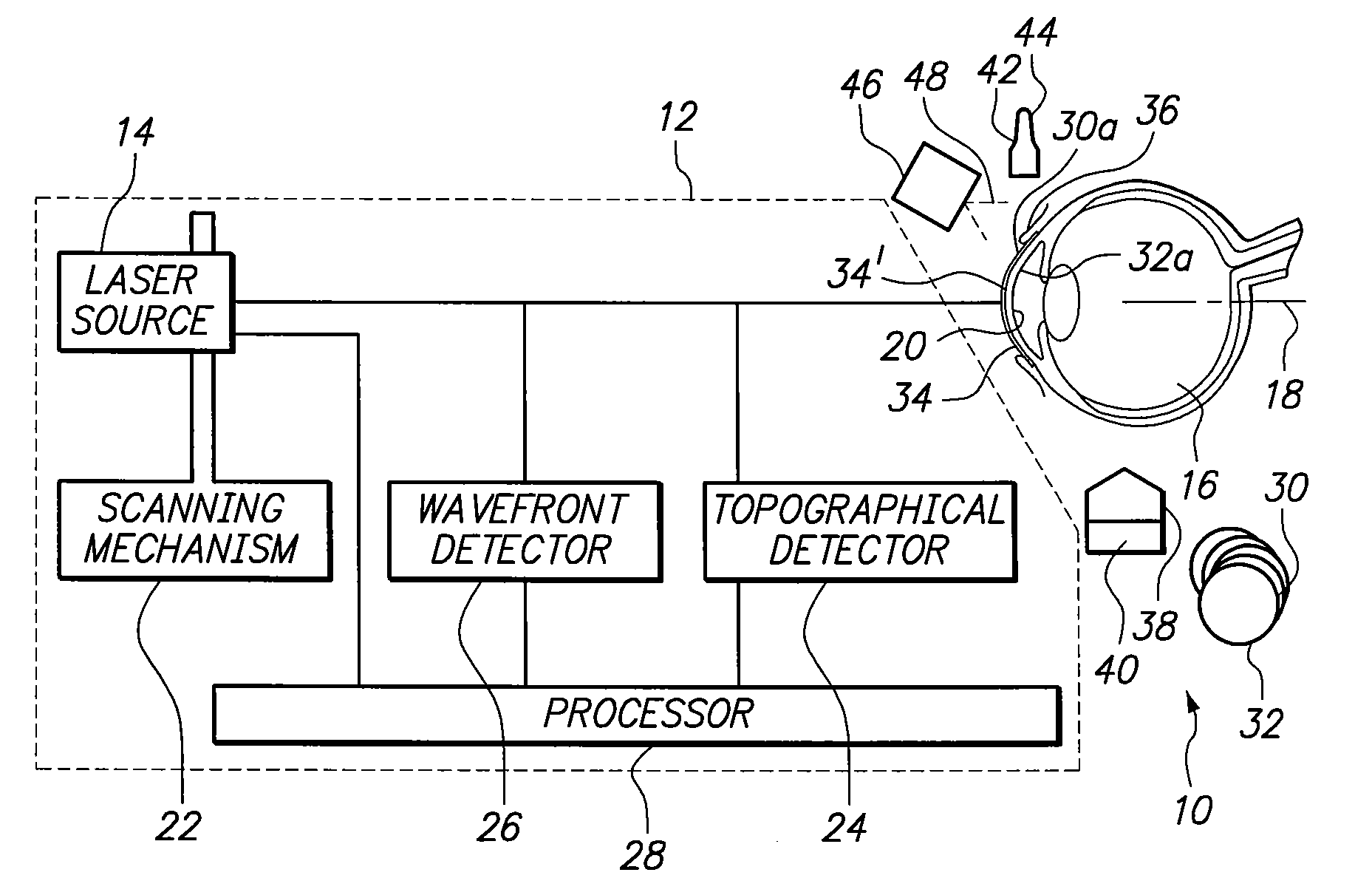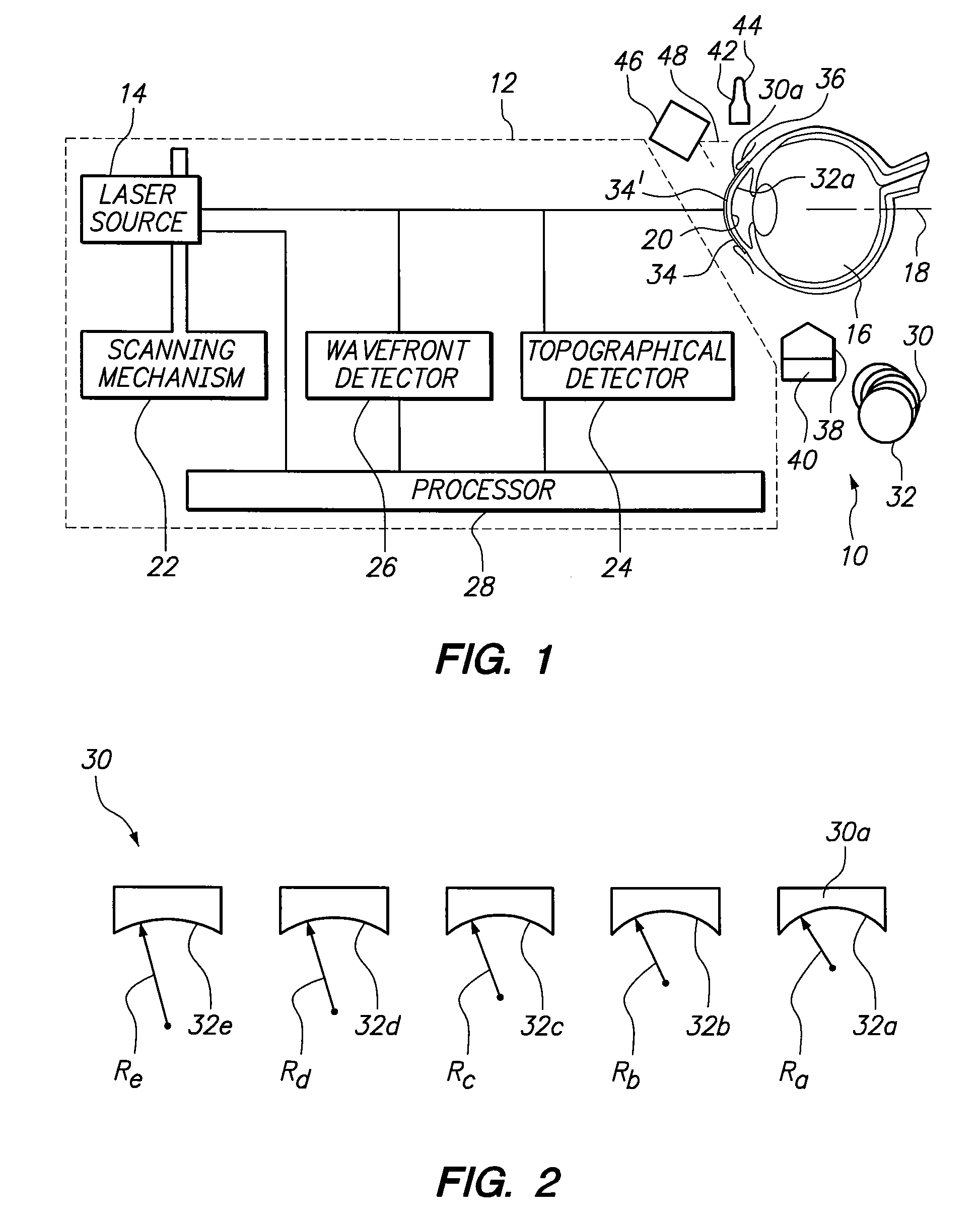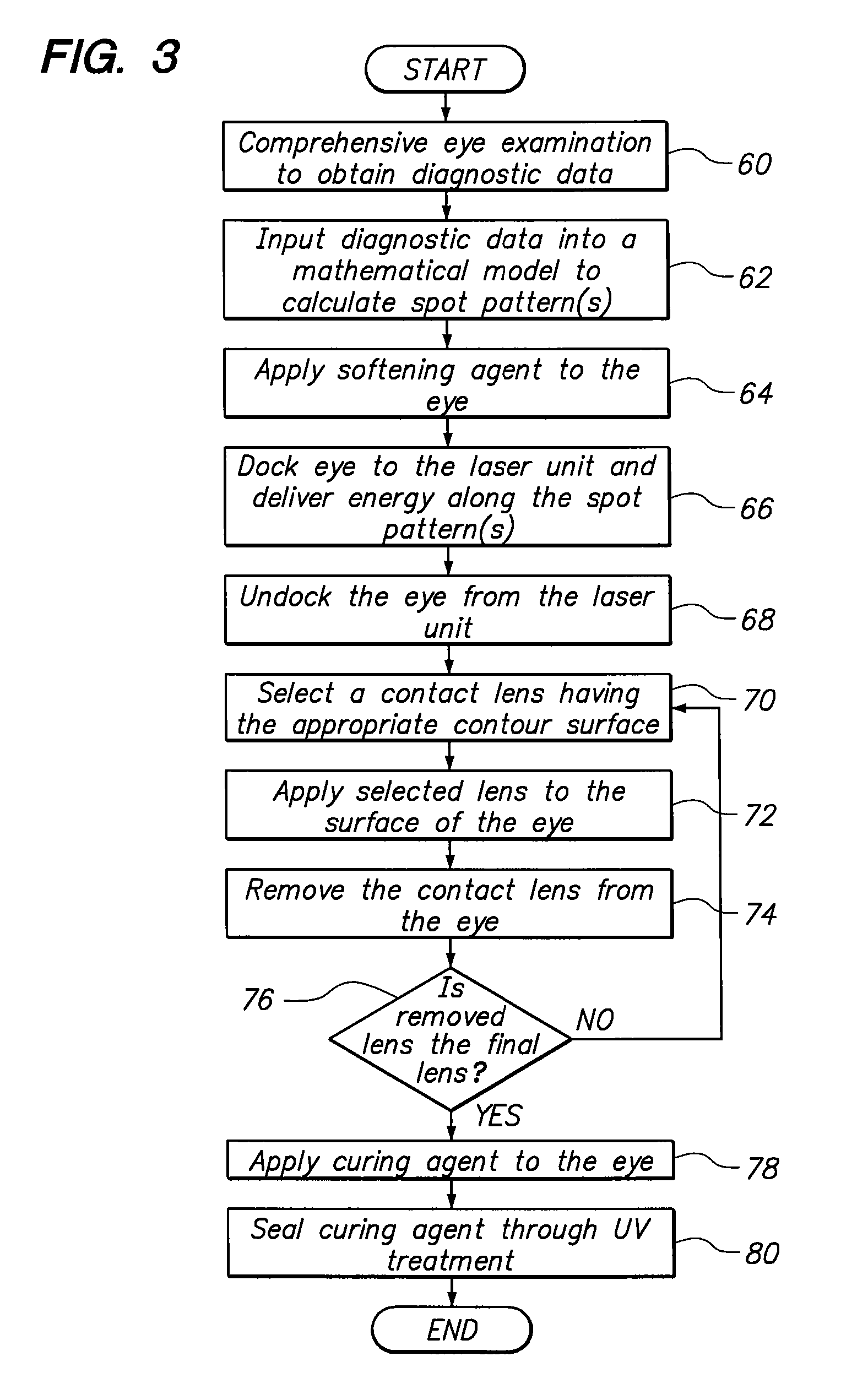Method and system for reshaping the cornea
a corneal reshaping and corneal technology, applied in the field of focused energy delivery systems, can solve the problems of corneal stromal tissue not healing optimally without further treatment, surgical procedures alone may not solve every optical aberration, etc., and achieve the effect of stiffening the stromal tissu
- Summary
- Abstract
- Description
- Claims
- Application Information
AI Technical Summary
Benefits of technology
Problems solved by technology
Method used
Image
Examples
Embodiment Construction
[0014]Referring initially to FIG. 1, a system in accordance with the present invention is shown schematically and generally designated 10. As shown, the system 10 includes a laser unit 12 provided with a laser source 14 to generate a laser beam. Further, the laser source 14 is positioned relative to the eye 16 to allow a laser beam to be directed along a beam path that is collinear with the optical axis 18 of the eye 16. For the present invention, the laser unit 12 may treat the corneal tissue 20 by means of ablation, disruption, chemical decomposition and / or combinations thereof. In certain embodiments, to perform a laser procedure to treat corneal tissue 20, the laser source 14 may have a mode in which the laser source 14 generates a continuous train of ultra-short pulses, with each pulse having a pulse duration in a femto-second range. For laser procedures involving intrastromal photoablation of corneal tissue, e.g., laser induced optical breakdown, each pulse will have an energy...
PUM
 Login to View More
Login to View More Abstract
Description
Claims
Application Information
 Login to View More
Login to View More - R&D
- Intellectual Property
- Life Sciences
- Materials
- Tech Scout
- Unparalleled Data Quality
- Higher Quality Content
- 60% Fewer Hallucinations
Browse by: Latest US Patents, China's latest patents, Technical Efficacy Thesaurus, Application Domain, Technology Topic, Popular Technical Reports.
© 2025 PatSnap. All rights reserved.Legal|Privacy policy|Modern Slavery Act Transparency Statement|Sitemap|About US| Contact US: help@patsnap.com



